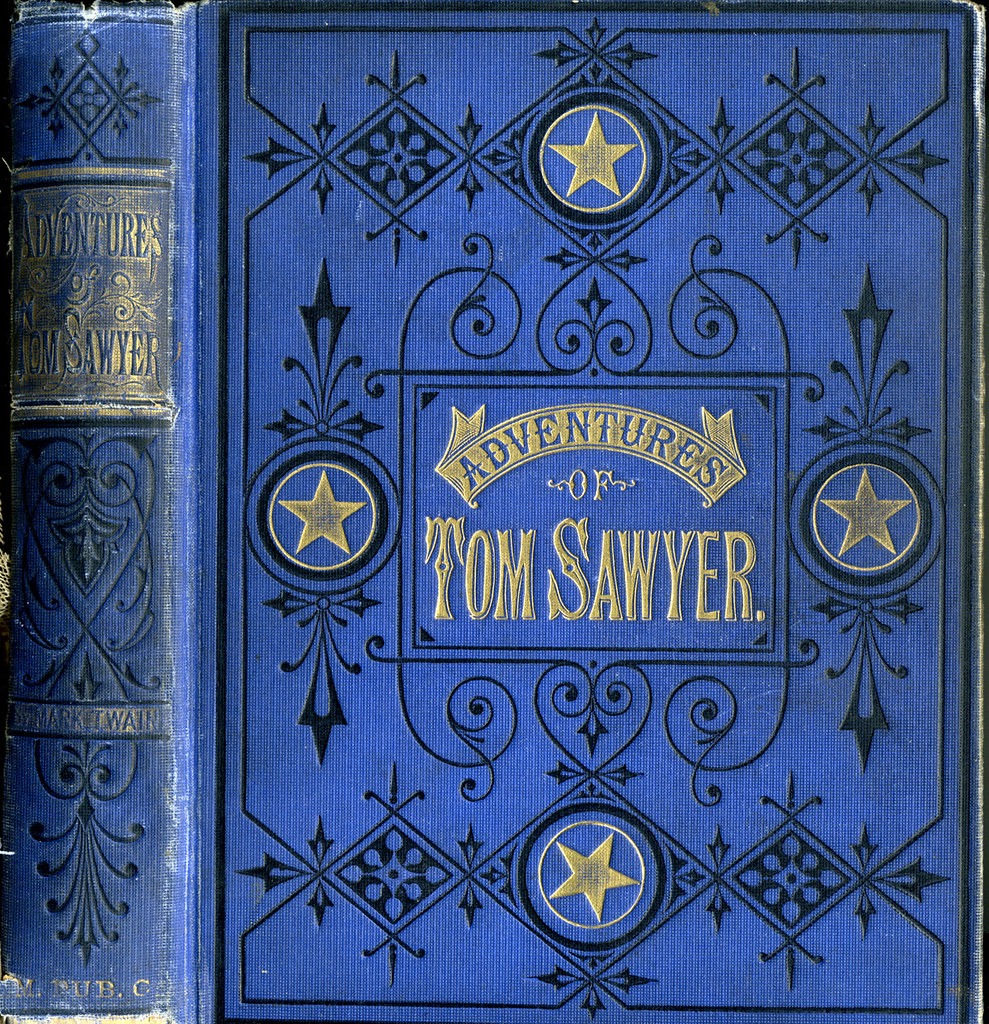A cornerstone of American literature: The Adventures of Tom Sawyer
The Adventures of Tom Sawyer is one of the cornerstones of American literature. Penned (or rather typed) by Mark Twain and released in 1876 in the United States, it is hard for many people to have not heard the names of Tom Sawyer or Huckleberry Finn in the cultural zeitgeist, even if such names are heard outside of their original context.
Tom Sawyer follows the story of the eponymous protagonist in a series of loosely episodic adventures over the course of his life in the Riverside town of St. Petersburg Missouri (based on Twain’s own home town of Hannibal) during the early 19th century prior to the civil war and at the height of the west-ward expansion. We first meet the cunning boy using his street smarts (and manipulation) to get his friends to complete his chore of painting Aunt Polly’s fence, by trading useless trinkets which he pretends are priceless by making them seem unattainable. We also see him get into fistfights, create rivalries, and try new and creative ways to cope with the boredom of school and church (including playing with a beetle).
A common through-line of the novel is Sawyer’s attempts to woo Becky Thatcher (who has just moved into the town); including his conflicts and ultimate romance with her (from a very childlike perspective of course). He also must grapple with the strictness of his Aunt Polly (who is his guardian) and goody-two-shoes nature of his half-brother Sid and his elder cousin Mary. Eventually, the story culminates in his absconding into the wilds of the Mississippi river with the vagabond Huckleberry Finn to pretend to be pirates – away from the responsibilities of the real world.
Throughout this time in Tom’s life however, he and Huck must attempt to avoid the wrath of the outlaw Injun Joe, who they witness murdering a respected member of the town. The pair must wrestle with the question of giving witness, which would see Joe seek retribution, or use what they know to save the wrongly accused Mr. Potter from the gallows. This leads to an intense showdown when Tom and Becky get stuck with Joe in the caves outside St. Petersburg.
without doubt a classic coming of age story as well as a highly effective satire of not only childish perspectives on life and growing up but also of the rigid and formal nature of early 19th century American life
The Adventures of Tom Sawyer is without doubt a classic coming of age story as well as a highly effective satire of not only childish perspectives on life and growing up but also of the rigid and formal nature of early 19th century American life. One reason why it retains a place in American canon is due to Twain’s quick wit combined with his reflection on his own childhood. In one particularly humorous instance early in the book, Twain observes how “work consists of what a body is obliged to do. And play consists of whatever a body is not obliged to do” – a message which many if not all readers (including myself) can sympathise with even going into adulthood.
In the middle of the novel as well, Twain describes an annual pageant at Tom’s school where they are forced to display works of art (such as poems) that they have authored. Acting as a brutal narrator, Twain delivers deadpan commentary, including noting how all the pupils have copied each other year after year and effectively renders the ceremony pointless.
Twain reflects on this notion throughout the book, writing in Chapter 5 “Often, the less there is to justify a traditional custom, the harder it is to get rid of it”. Twain also directs this critique towards religion in rural Missouri during the 1800s further noting: “The minister gave out his text and droned along monotonously (…) and yet it was an argument that dealt in limitless fire and brimstone and thinned the predestined elect down to a company so small as to be hardly worth the saving” – questioning why the strict nature of the church should be abided by if all are damned to hell in the first place?
Tom Sawyer is a reflection on how life should need not be a rigid pageant nor that things should necessarily be taken too seriously in life
If anything, Tom Sawyer is a reflection on how life should need not be a rigid pageant nor that things should necessarily be taken too seriously in life. That said, Tom and Huck giving witness to save the innocent Mr. Potter establishes that there is a right and a wrong in life, however just because some choose not to live by the strictest of traditions does not mean they’re evil or even wrong. For Twain, children should be allowed to live life filled with play and fun.
Whilst a number of elements are certainly outdated by today’s standards (no less the portrayal and name of ‘Injun Joe’ carrying connotations reinforcing negative stereotypes of Native Americans), regardless there are themes in Tom Sawyer which I ardently believe continue to be relevant and sympathised with over 100 years since Twain first wrote it. By the 1950s, fellow Missourian Walt Disney ensured that an attraction known as ‘Tom Sawyer’s Island’ would be built with a ferryboat (christened the Mark Twain) circling around it in his Disneyland Park in California, hence showing its resonance with the next generation of storytellers who have in turn inspired further generations.
Ultimately, Tom Sawyer is about childhood and innocence. It proudly promotes notion of imagination and happiness whilst strongly ridiculing ultra-conservative ways of living. This is a book which members of all age groups and of all backgrounds and sit down and have a laugh with as they identify with the hardships, glory, and childlike wonder within The Adventures of Tom Sawyer.

Comments